Electric Vehicle Statistics 2023
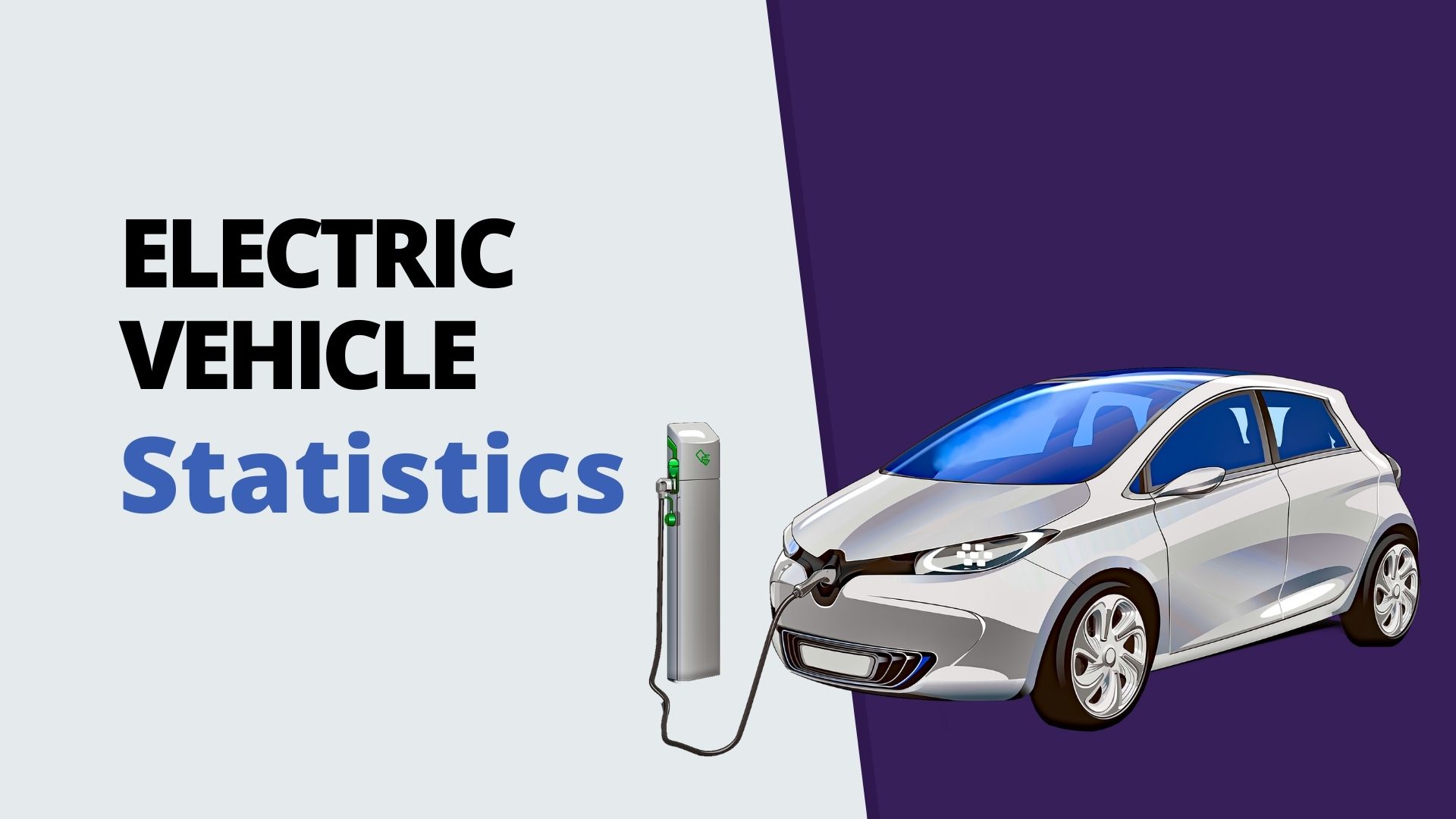
Page Contents
- Introduction
- Electric Vehicle Statistics
- EV Industry Size
- Global EV Market Statistics
- The Best Electric Automotive Brands
- Ev Technology Statistics
- EV Sales Forecast
- Important EV Market Insights
- The Charging Status of EVs
- Essential Takeaways for Electric Vehicles Statistics
- Electric Vehicles are Growing at a Rapid Rate.
- Significant developments in the EV market
- Conclusion
Introduction
Electric Vehicle Statistics: Electric vehicles are becoming popular with car owners all over the world. Electric vehicles and Hybrid electric cars are frequent subjects of conversation. They will replace traditional engines in the future. This is because the need for EVs has grown continuously in the past couple of years. Despite this fact, the automotive industry had to face a number of difficulties during this period. It was EV sales also grew in the automotive market.
The idea for EVs is the most recent idea. The market for EVs will expand in the coming years. Numerous countries are planning to meet the date for a ban on diesel and petrol-powered vehicles. The best option is available for people. It's an environmentally friendly global initiative that has long-lasting batteries. Electric vehicles have shown remarkable growth across the globe during the past few years. These statistics on electric vehicles provide useful information about the rapid expansion of vehicles powered by electricity. As with the countries they're well-known in, they also provide information about the market for electric vehicles, etc.
Electric Vehicle Statistics
Here are some interesting facts on electric vehicles.
- The market is valued at around 250 billion dollars.
- There are more than 10 million EVs driving around the world.
- More than 6 million plug-in EVs are sold annually.
- Norway is also leading the way in terms of the percentage of new E-EV registrations.
- China has 8 times more publically available chargers than any other nation.
EV Industry Size
The industry of electric vehicles is worth 287.63 million dollars. This figure is expected to grow until 2028 when it will reach 1.3 trillion dollars. Since there is a growing adoption of electric vehicles in future years. The rate of growth will be around 17.30 percent over the next forecast timeframe. This is due to the rise in performance and efficiency of high-performance vehicles. Low-emission vehicles, government pollution control policy, etc. the decline in battery charges, and the increasing need for fuel-efficient vehicles. This is why the growing demand for fuel-efficient technologies has caused an increase in demand to purchase electric automobiles. Furthermore, the government as well as several environmental groups have enacted strict emission regulations to reduce the emission of cars that are harmful to the environment.
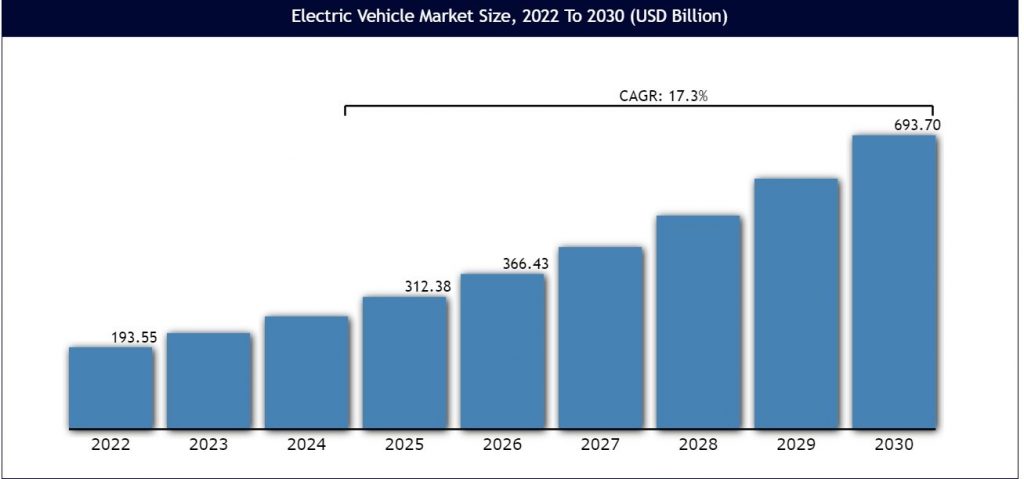
Global EV Market Statistics
- The sales of electric vehicles during 2023 have increased by more than 5 percent.
- One of every ten vehicles sold in 2023 was an entirely electric vehicle that was powered by batteries.
- China is still the world's leader with respect to EVs followed by the USA and Germany
- The sales of electric vehicles in the USA rose by nearly 57% and rank in the top 3 markets for EVs.
- Tesla Model Y has retained the title of being the best-selling passenger car in the world.
- Based on the current growth rate all EV sales are projected to exceed 10 million by by the end of 2023.
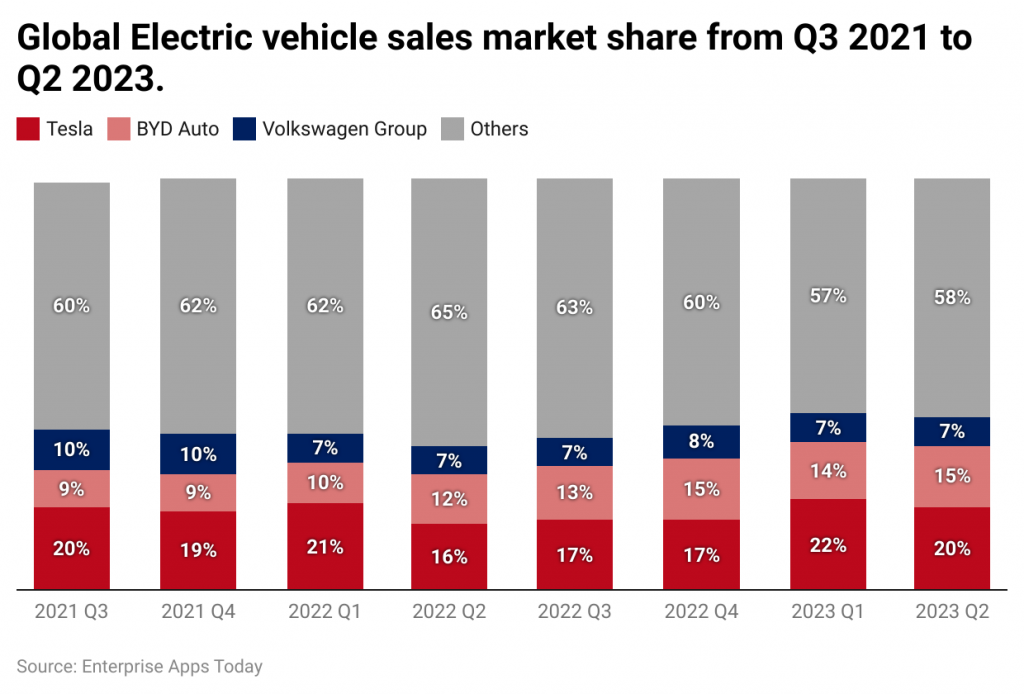 (Source: counterpointresearch.com)
(Source: counterpointresearch.com)
The Best Electric Automotive Brands
Tesla sales have risen by 83% in the 2 2nd period of the year 2023. The company's Model Y has accounted for Tesla's total sales worldwide. Model Y retained its title as the top-selling automobile model in the world.
The sales of Byd cars have increased by 96 percent. It's the best-selling BYD model, and it was launched in April 2023. Byd also exported more than 35,000 EVs in this second quarter. Nearly two-thirds of them are exported and are being sold to Thailand, Israel, and Australia.
Volkswagen Group of VW grew by 48% in its second quarter of 2023. The most popular models sold by the group make up nearly 50 percent of the group's BEV total sales.
Ev Technology Statistics
Electric vehicles are expected to grow exponentially. Around 2.3 million cars powered by electricity will go on sale during the beginning of 2023's first quarter. A 14 million increase in sales is expected. The forecast will show an increase of 35% every year. New purchases will increase in the second quarter of the calendar year. Thus, the sales of electric vehicles will be at 18% throughout the year. Incentives and policies at the national level help to boost sales in exchange for higher oil prices.
EV Sales Forecast
The first signs in the early quarters of 2023's first quarter have resulted in an optimistic market. This is backed by a decline in prices and government assistance in the market. As in the US, the present estimation is close to 14 million electric vehicles to be sold by 2023. This is equivalent to building more than 2.3 million sold vehicles during the initial quarter. This is also an increase of 35% in the sales of electric vehicles by 2023 compared to the previous year. This will bring the worldwide electric vehicle market share to about 18%, which is up from 14 percent.
Electric vehicle sales over the initial three months in 2023 have shown positive indications of expansion. In the United States over 320,000 electric cars were sold in the first quarter of 2023. This growth is expected to continue. The electric car market will be more than 1.5 billion by 2023. In China, the sales of electric cars showed a rocky beginning in 2023. The most recent data reveal that the top electric vehicles will be responsible for 37% of the total passenger EV sales in the first quarter of 2023. The Tesla Model Y remains the best-selling model in the world. It's also followed by Tesla Model 3 and BYD's song. In the first quarter of 2023, the Tesla Model Y achieved the notable distinction of being the top-selling model of a passenger car in the world. It also surpassed traditional gasoline vehicles.
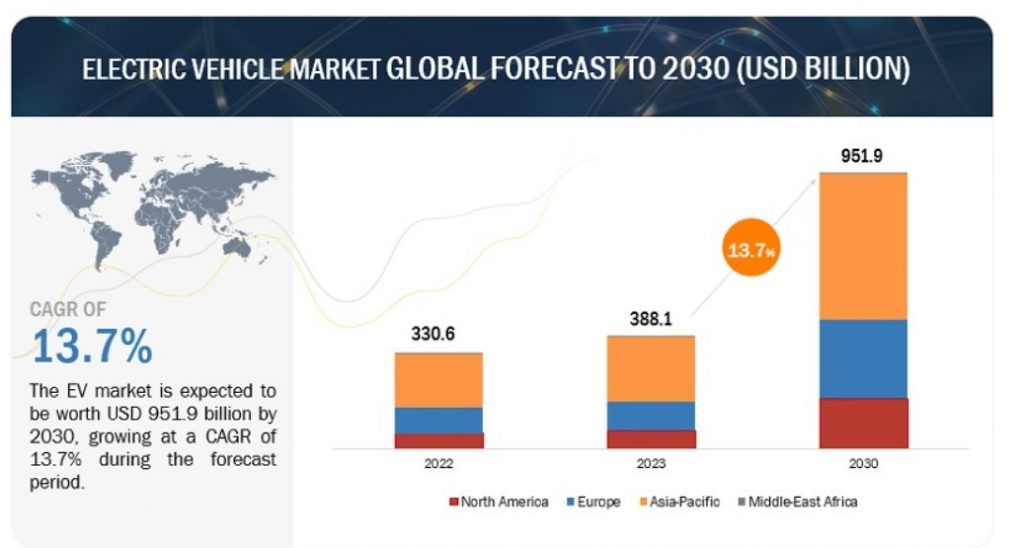 (Source: marketsandmarkets.com)
(Source: marketsandmarkets.com)
Important EV Market Insights
The market will recover the EV costs for subsidy. There are a variety of changes in the subsidies provided by governments for electric vehicles across the globe. This led to a decline in EV sales by 2022. There were some indications of changes by 2023, mostly within China, Norway, Sweden, and the UK. It is believed that the US is the one where the customers will gain in 2023. It will depend on the EV model they purchase. The new program will grant an opportunity to purchase EV models based on cost. The vehicles will be constructed and supply minerals and other components for the battery. It is one step in the right direction in the US because the policy could result in a small number of vehicles being eligible for federal tax credits by 2023.
The price war for Ev is on. Thanks to Tesla's reduction in the prices of cars in January 2023. The price of the car dropped by about 20% based on the model and the market. In addition, it helped models qualify for subsidies that will be available in 2023. The price cut has also helped the market in which subsidies were cut. With no dealer network and marketing campaigns, Teslas have made quick choices and have adapted to marketplace conditions in the local area. The expansion in production capacity and efficiency has led to an advantage in scale and the capability to provide rapid delivery. The price cut affected the margins as well.
Many of the emerging Chinese EV manufacturers will market their vehicles outside of China. They are keen to take advantage of opportunities in the market. With a high demand and a low supply. Europe is a major location for expansion. The process usually begins with an intermediary partner. Despite the fact that automobiles have to be flexible by 2023. In 2023, the EV demand will be heavily affected by the cost and incentives. The slow EV increase in mature markets. The rising rate of interest and inflation has led to economic uncertainty. 2023 will be a year of growth that is modest. The EVs will satisfy the needs and, more importantly, the budget of customers. Also, even though there's an absence of market saturation at present without EVs in all categories of vehicles. Without EVs at a lower cost.
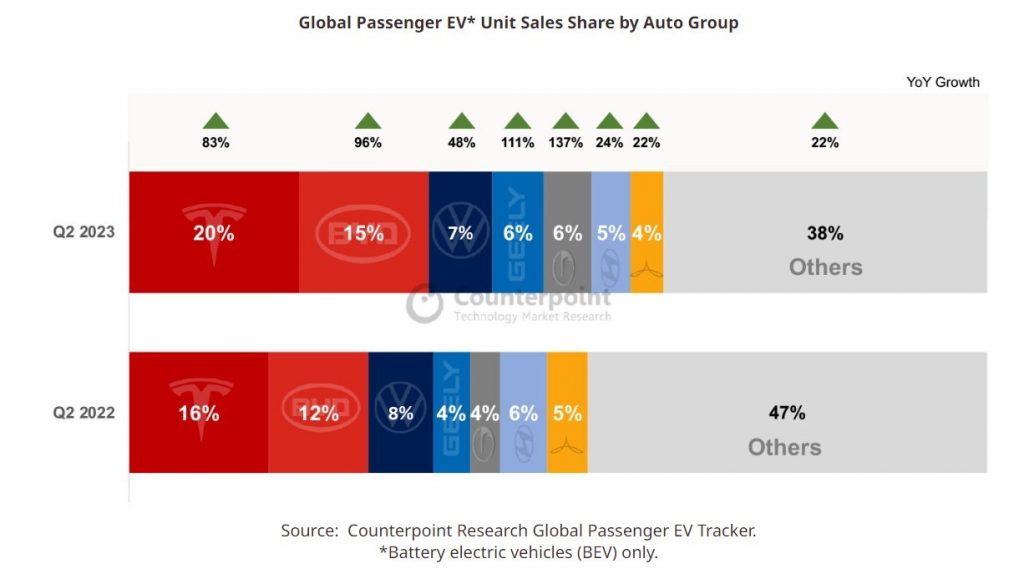
The Charging Status of EVs
A majority of stations are in place. Charge points for public charging are designed to accommodate the large EV usage. Fast chargers are currently being installed. for long trips. The most efficient method to test the range is to determine how many miles EVs can travel before stopping and recharging. In Europe as well charging stations that are slow are replaced by speedy or ultra-fast chargers. The amount of fast chargers has increased and now exceeds 7000 units. The regulation on alternative fuel infrastructure was also revised in the early 2023's first quarter. They also established the standards to ensure EV charging infrastructure across Europe.
Essential Takeaways for Electric Vehicles Statistics
- The sales of EVs will grow by 80 percent across the US.
- In 2040 Europe is expected to achieve 40 percent greenhouse gas reduction, and net zero by 2050.
- Asia Pacific EV market will be estimated at 123.4 billion dollars
- Bev is expected to account for the highest revenue share of 67 percent.
- The type of vehicle that is the segment for passenger cars, will make up 62% of revenues
- Asia Pacific will dominate the market with 42% of the revenue share.
- The hybrid electric car will be 301.67 billion by 2030.
- Plug-in hybrid EVs will earn a profit of 385,617 million from 2022 until 2030.
- The value of the commercial EV marketplace is 47,351.9 million.
- The market for luxury electric vehicles is expected to grow to 441,273 million by 2030.
A rise in funds and investments is a key factor in the electric vehicle market's expansion. Ford declares that it will invest 11.5 billion dollars in electrifying its vehicles. In line with this, Mercedes Benz confirms the release of 25 electric plug-in hybrid vehicles and fully electric vehicles in 2025. Different products from different companies will offer customers a variety of evidence of the growth in market demand for electric cars.
Electric Vehicles are Growing at a Rapid Rate.
Many initiatives are initiated by the governments of various nations. For instance, tax rebates, subsidy grants, and other financial benefits for car registrations. The availability of carpool lanes is anticipated to boost the sales of electric cars in the near future. As in November of 2019, German car manufacturers will increase cash incentives for electric vehicles. The shift of combustion from the engines to battery-powered ones has decreased harmful emissions. Countries such as the US, China, and other countries in Europe have witnessed an increase in the sales of EVs.
But, the absence of charging facilities, the variations regarding load configurations, as well as the absence of standards are major reasons that limit growth in the market. The diverse regions of China, Europe, and Japan have different standards for charging electrical vehicles. A few of the electric vehicle manufacturers such as Tesla are focused on the international commonality of the charging infrastructure. However, the increase in electric vehicles' use in the commercial and government sectors is likely to propel the market. They will additionally be endorsed by the UK government in order to become entirely electric in 2025. This means that there will be a rise in the demand for efficient fuel and high-performance and low-emigration vehicles. The strict rules of the government and regulations regarding vehicles emigrating, as well as the lower cost of both the battery as well as fuel expenses. The absence of manufacturing costs that are high charging structures, the range of serviceability, and worry.
Significant developments in the EV market
- In January 2023 In January 2023, the UK government was able to achieve its aim of converting half of the cars to low-emission vehicles. In order to move forward with the reduction of carbon emissions in the central automobile fleet.
- Mg revealed the new electric concept car at the biennial auto show that took place in India in 2023.
- The major player Toyota launched the brand innovative Mirai as well as LS versions in Japan City. This is accompanied by the latest technological advancements in driving assessment.
- The four brand-new electric vehicle models come with batteries that are equipped with the most recent features and safety.
- The vehicles come with two variants of batteries that are available with four different powertrain options.
- Tesla is regarded as the inventor of Maxwell's technology. The acquisition was done in the hopes of improving
- Tesla's batteries while reducing total cost to gain an edge on the market.
- 7 Seater automobiles are also produced in China. These cars are sold in China.
The bold policy plans in large economies, such as the Fit for 55 package in the EU as well as the Inflation Reduction Act in the US. The expected growth of electric vehicles is also anticipated to increase even more. The market share for electric vehicles is expected to increase in the coming year and even beyond. In 2030, there will be a 5% proportion of electric cars on the market will be around 60% across China as well as the EU and the Inflation Reduction Act in the US. It's also expected to increase by 60 percent. These positive trends also have positive impacts on battery production as well as supply chains. The report highlights the projects for battery manufacturing that are being announced. will be more than sufficient to supply the need for electric vehicles in 2030. Manufacturing remains a major concentration in China which is the largest market for market for components and batteries. The market also grew the share of electric vehicles globally by around 60%.
Positive trends suggest an optimistic outlook for batteries and their supply chain. The report also focuses on the battery manufacturing projects that will supply the need for electric vehicles in 2030. Zero emissions net in 2050. Manufacturing is extremely focused in China. This has increased the percentage of global electric vehicle exports to over 35% in the last year. Other nations have announced plans to encourage domestic manufacturing. This will increase the EV market's competitiveness. This legislation EU Net Zero Industry Act will require 90% of the annual demands for batteries to be fulfilled by battery makers in the US. It is also known as the US Inflation Reduction Act also insists on the strength of the supply chain for domestic batteries, electric vehicles, and minerals.
Conclusion
The market for electric vehicles has seen a remarkable increase in 2023. The world is moving towards sustainable transport. With the rise in environmental awareness advanced battery technology and the support of government policies. The adoption of electric vehicles continues to grow. In 2023, record-breaking sales numbers are expected, as well as significant investments in charging infrastructure and the expansion of EV models that are available to consumers. The auto industry will determine how transportation will be in the near future. It also helps to create the environment by being cleaner and greener. The 2023 statistics provide proof of the rapid change in the auto landscape. It also provides an outlook for electric automobile mobility.
Sources
FAQ.
The revenue in the electric vehicle market is projected to be 70.13 billion dollars in 2023. An annual growth rate is 18.17% which results in projected market volume.
The average range of electric vehicles is 300 miles. With the help of a single charge.
The highest-range EV is Tata Nexon. With the claimed range of 453 kilometers on a single charge.
At the end of July 2023, there are more than 1,360,000 plug-in cars around the 840,000 battery electric vehicles. Last year, plug-in hybrid and battery-operated electric cars were registered and showed growth of 20%.
The future of EVs is expanding at 21.7%. this will continue to rise. Various factors are there like an increase in pollution and to drive the quick expansion.

Barry is a lover of everything technology. Figuring out how the software works and creating content to shed more light on the value it offers users is his favorite pastime. When not evaluating apps or programs, he's busy trying out new healthy recipes, doing yoga, meditating, or taking nature walks with his little one.